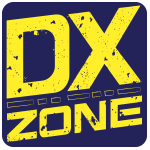Links
Learn how to troubleshoot and configure ICOM 7300 Rig Control under Linux for seamless communication between your radio and computer. Author Colin from Canada shares his insights and experiences with setting up rig control software for digital signal decoding.
This page provides detailed instructions on refining an end-fed vertical dipole antenna for ham radio operators looking to improve their signal reception and transmission. The content offers practical tips and techniques for optimizing the performance of this specific type of antenna. The page is useful for hams who are interested in experimenting with different antenna designs and configurations to enhance their overall radio communication experience.
This blog post from KA7OEI covers the author’s initial exploration into the world of Arduino, a popular open-source electronics platform. The post likely discusses the author’s experiences, challenges, and successes with Arduino projects, particularly in relation to amateur radio or other technical hobbies. It may provide insights, tips, or inspiration for hams interested in incorporating Arduino into their own projects. The content is likely informative, personal, and geared towards amateur radio operators or electronics enthusiasts.
The KA7OEI Blog offers random musings on technical subjects related to amateur radio, with a focus on improving stability using the QRP Labs ProgRock 2. It provides insights and tips for ham radio operators looking to enhance their equipment.
This article published on QEX details measurements of tree conductivity and permittivity at HF frequencies, addressing a long-debated topic in amateur radio. N6LF conducted experimental impedance measurements on Douglas fir and maple trees using a vector network analyzer with rings of nails inserted into tree trunks. Results showed that tree conductivity increases with frequency while relative permittivity decreases, similar to soil characteristics. Measured conductivity ranged from 0.06 to 0.4 S/m at 10 MHz, aligning with values used in previous research. These findings validate that NEC modeling can reliably estimate trees’ substantial impact on HF antenna performance.
Wavelog is a web-based amateur radio logbook application launched in February 2024 by four core developers (DF2ET, DJ7NT, HB9HIL and LA8AJA) who forked from the established Cloudlog platform. This open-source project represents significant advancements in stability and functionality, developed by radio enthusiasts for the amateur radio community. Wavelog distinguishes itself through simplicity, powerful features, and versatile accessibility—allowing users to manage their radio logs from anywhere via professional servers, standard web hosting, or even home Raspberry Pi setups. The project embodies the collaborative spirit of the amateur radio community, driven by passion rather than commercial interests.
This page provides information on how amateur radio, or ‘Ham’ radio, is used by the yachting and small boat community for communication and weather information. It explains the global operation of amateur radio, regulations within the U.S., and the role of the American Radio Relay League (ARRL) in licensing and training. The page also highlights maritime ‘nets’ where Hams exchange weather reports, using voice and digital modes. It encourages establishing webpages for nets and mentions the MAROB and SKYWARN Programs for marine observation and severe weather reporting. The content is useful for hams interested in maritime communications and weather reporting.









